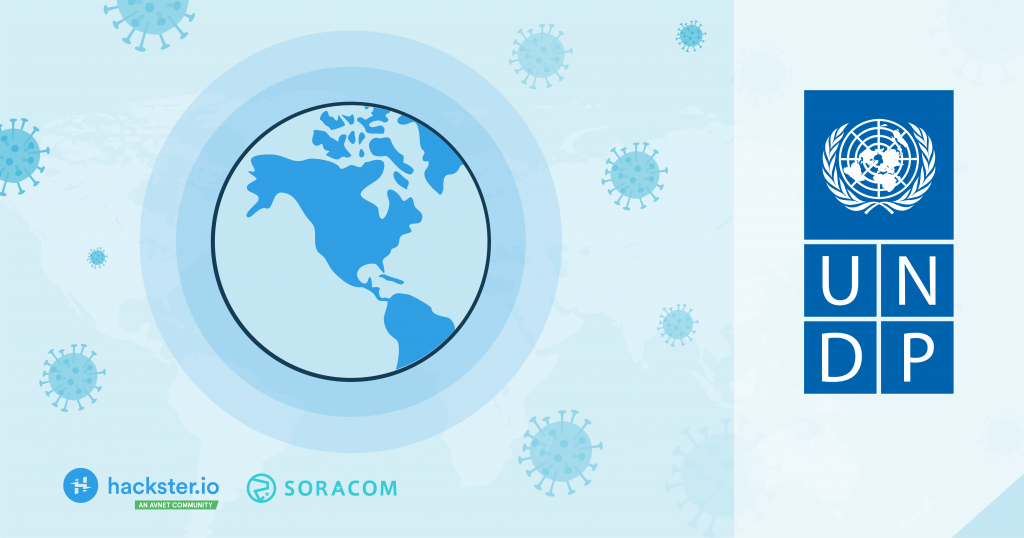IoT Applications: IoT vs COVID

You’ve probably heard the expression “the only way out is through.” This holds especially true to our current moment in history, as we imagine what our next steps as a global society might look like when the COVID-19 pandemic recedes. If a return to “normal” is no longer an option, what might the future look like?
Even as vaccines begin to roll out worldwide, the COVID-19 crisis remains far from over. People from all walks of life are reconsidering everything from the structure of work and family life to our relationships with our neighbors and our governing structures. Beyond the immediate impact, COVID-19 will not be the last pandemic or epidemiological crisis we will face as our world grows more populous and more tightly interconnected.
According to The United Nations Conference on Trade and Development (UNCTAD), “frontier technologies” that take advantage of “digitalization and connectivity,” like the Internet of Things, will play an important role in addressing these challenges. In addition to IoT, these potentially transformative technologies include artificial intelligence (AI), big data, blockchain, 5G, 3D printing, robotics, drones, gene editing, nanotechnology and solar photovoltaic power.
“These rapidly developing technologies represent a $350 billion market, which by 2025 could grow to over $3.2 trillion,” according to a recent UNCTAD Technology and Innovation report that encourages a deeper and wider level of government investment in science and technology.
IoT + Public Health
Protection through connection
How are technologists using IoT to move through COVID-19 and prepare for potential future pandemics? Here’s a look at some new ideas, initiatives, and concepts from academics, enterprise companies, startups, and independent builders.
Integrated Hospital Networks. One study recommends the development of IoT connected hospitals that automate treatment processes, improve information protocols for hospital staff, offer telehealth consultations, smart tracing of infected patients, and real-time information during the spread of infection.
Sub-Zero Vaccine Temperature Monitoring. Swift Sensors, a provider of Industrial Internet of Things (IIoT) sensors developed a secure wireless vaccine storage unit monitoring and alert system. This technology is critical for expanded vaccine delivery and ensures safe temperatures in storage environments.
As noted in the company’s January 2021 announcement “the SG3-1010 wireless gateway sends data to a secure, cloud-based Swift Sensors console account, which can be accessed by pharmacy and clinic managers via computer or mobile device.”
Virus Transmission Control. Networks of wireless technologies can help monitor the spread of disease outdoors. Drones, cellular positioning systems, and global positioning systems (GPS) can work together to monitor crows and ensure that people maintain a safe distance, for instance.
“Outbreaks of COVID-19 usually occur in clusters in specific regions and then continue to spread,” writes a team of researchers for Frontiers and Communications and Networks. “As such, their spread can be modeled using high-quality geospatial data. Also, satellite imagery can identify populations that are at risk and track their healthcare and testing facilities.”
Mobile Contact Tracing in High-Risk Regions. In low-income regions with limited access to vaccines and hospital treatment, isolating cases and tracing contacts can be the key to controlling COVID-19 spread. For example, communities in Bangladesh may lack the resources to expand testing capabilities, but85% of households have access to mobile phones that can be used to collect contact tracing data. As a recent report in BMJ Opinion explains, “Data can be uploaded to IEDCR database through community clinics, emailed or shared directly by the mobile device… Financial incentive for contact tracers may aid data collection.”
Manufacturing Equipment Updates. Especially at the beginning, the COVID-19 pandemic caused widespread supply chain and manufacturing disruptions. Remote monitoring became integral for maintaining equipment uptime when it was unsafe for technicians to travel onsite. As IoT for All reports, “Extending beyond remote monitoring, customers can remotely diagnose and service equipment by triggering remote actions such as troubleshooting or software package updates.”
Temperature Controlled Visor. One independent group of builders hacked together a temperature controlled visor — and published instructions for how to build it.
“Thanks to our open source connected visor, the user will be able to protect his face, keep a social distance of 1 meter, wash his hands properly for 20 seconds and monitor his body temperature.”
Gesture Based Interfaces. Contagions of all sorts travel through touch. One way to outsmart the spread of the virus is to use a gesture-based interface. It’s possible to build and deploy this technology with a smartphone. A blueprint to build this capability is available from a group of independent developers.
“In this method, your smartphone acts as a remote control. The app on your phone uses the MQTT protocol over WiFi to communicate with the intangible surface.”
Intelligent Social Distance. The world hasn’t been the same without the public events that we know and love. As public spaces such as theme parks begin to open, safety precautions for social distancing will be a top priority.
“The transformation that I propose is backed by what I call the ‘pod’ concept,” writes Vinod Anand Bijlani for IoT for All. “A family or a group visiting the theme park, for all practical and safety purposes, can be classified as a ‘pod.’ Each member of the family or group can be considered a ‘pod member.’ The concept of pods and pod members helps with tracking and safe distancing of visitors and prevents intermingling and cross-infection between pods.”
“The pod concept will be combined with wearable IoT technology to effectively and continually track the movement and geographical location of pod members.”
Enhanced Janitorial Capabilities. Zan Compute has built an intelligent janitorial solution that converts entire manual cleaning processes into a data-driven AI solution. Sanitation, in the coming years, will be a key area of innovation and strategic focus. Learn more about Zan Compute’s solution here.
Thermal Scanning. Touchpoint creates contactless time clocks, self-operating kiosks, and plug-and-play DIY solutions make it dramatically easier for school districts to reliably and safely track time and attendance data for all employees. This technology has been essential for school reopenings during COVID-19. The company is building upon this core technology by using thermal scanning to collect HIPAA compliant data from employees, volunteers, and visitors. Read more about the tech here.
Intelligent City Infrastructure. Since 2015, Omniflow has been inventing technology that brings this commitment to civic empowerment, to life. The company’s flagship product is an award-winning vertical axis turbine, coupled with solar energy, that reduces the visual impact of windmills in urban and remote areas.
One city government is already using Omniflow as part of a COVID-19 response strategy, to open up responsibly. Security cameras can give city governments a real-time view of how people are forming groups. Learn more about Omniflow here.
IoT Steps Up to the Challenge
In April of 2020, Avnet, Hackster.io, and a coalition of leading technology companies (including Soracom) joined forces with the United Nations Development Programme to launch the COVID-19 Detect Protect Challenge.
This initiative was designed to help engineers worldwide design low-cost, easily-deployed software, hardware and services to support detection and prevention of COVID-19 in some of the world’s most vulnerable areas. When submissions closed in July, the Challenge had received over 350 entries, representing the work of nearly 2,500 developers, makers, and engineers from around the globe.
Prize-winning projects from developers and engineers around the world were announced in August, 2020 can be viewed here.
———
Looking for the best way to get your device connected to the cloud over cellular? Soracom is the world’s leading IoT platform for technology innovators.
To get started, visit the Soracom store and order our IoT SIM card now!




